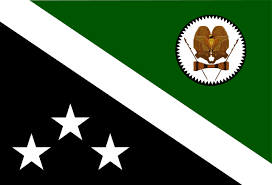Dei District is a part of the Western Highlands Province in Papua New Guinea. Located in the western region of the province, it is known for its picturesque landscape of mountains, valleys, and rivers, showcasing the natural beauty of the area. However, compared to other districts, Dei District may face some development challenges, including limited infrastructure and access to essential services such as healthcare and education.
Despite these challenges, Dei District holds potential for growth and development. The district’s natural resources, including fertile land and agricultural opportunities, present prospects for the agricultural sector. Communities in Dei District engage in activities such as subsistence farming, animal husbandry, and small-scale trade. Additionally, the district is culturally diverse, with various ethnic groups contributing to its rich cultural heritage through their traditions, languages, and customs.
To enhance development in Dei District, efforts can be made to improve infrastructure, including the development of roads and transportation networks. Increased access to essential services such as healthcare facilities and educational institutions is also crucial for the well-being and growth of the district. Furthermore, investment in the agricultural sector can be prioritized to leverage the district’s natural resources and promote economic opportunities for its residents. By focusing on these areas of development, Dei District can unlock its potential, preserve its cultural heritage, and improve the quality of life for its inhabitants.
Mt. Hagen District in the Western Highlands Province of Papua New Guinea is a highly urbanized area and the capital city of the province. It enjoys better access to essential services compared to other districts, with well-established healthcare facilities, educational institutions, and transportation infrastructure. The district’s strategic location as a transportation hub, connected by the Highlands Highway and the Kagamuga regional airport, contributes to its economic activity and regional connectivity.
Culturally, Mt. Hagen District is diverse, with various ethnic groups showcasing their traditions, languages, and customs. The district hosts cultural events like the Mt. Hagen Cultural Show, attracting visitors from around the world and celebrating the rich cultural heritage of the region.
To sustain and enhance development, focus should be placed on improving infrastructure, promoting economic opportunities, and ensuring the provision of essential services. Investments in road networks, utilities, healthcare facilities, and educational institutions can support the district’s urban environment and improve the quality of life for its residents. Sustainable urban development practices can be implemented to ensure long-term growth and prosperity for Mt. Hagen District and its diverse communities.
Mul-Baiyer District in the Western Highlands Province of Papua New Guinea features diverse landscapes, including mountains, valleys, and rivers. The district faces challenges in terms of limited infrastructure and access to essential services like healthcare and education. However, Mul-Baiyer District holds potential for agricultural development and cultural preservation.
The district’s fertile land offers opportunities for agriculture and farming activities. To unlock this potential, promoting sustainable farming practices, improving market access, and enhancing productivity are important. Mul-Baiyer District is culturally diverse, with various ethnic communities contributing to its richness through traditions, languages, and customs.
To support development in Mul-Baiyer District, investments in infrastructure, particularly in transportation and connectivity, can stimulate economic activities and improve access to essential services. Enhancing healthcare and education facilities is crucial for the well-being and quality of life of residents. Preserving and celebrating the district’s cultural heritage can foster community cohesion and pride.
By addressing infrastructure limitations, promoting agriculture, and preserving culture, Mul-Baiyer District can overcome challenges and achieve sustainable growth, benefiting its residents and preserving its unique identity.
Tambul-Nebilyer District, located in the Western Highlands Province of Papua New Guinea, is known for its natural beauty and agricultural potential. The district boasts lush landscapes, fertile land, and a diverse range of crops, including coffee, tea, and fresh produce. However, Tambul-Nebilyer faces challenges related to limited infrastructure and access to essential services.
To support the district’s development, investments in infrastructure, including road networks and utilities, are crucial. Improving connectivity and access to healthcare facilities and essential services are essential to enhance the well-being of the residents. Additionally, Tambul-Nebilyer District is culturally diverse, with distinct ethnic communities that contribute to its rich cultural heritage.
Efforts should be made to preserve and celebrate the cultural identity of the district. Promoting sustainable agricultural practices and furthering economic opportunities in the agricultural sector are also important for Tambul-Nebilyer’s development. By addressing infrastructure limitations, enhancing access to essential services, and celebrating cultural heritage, Tambul-Nebilyer District can unlock its potential and improve the lives of its residents while maintaining its unique identity.
